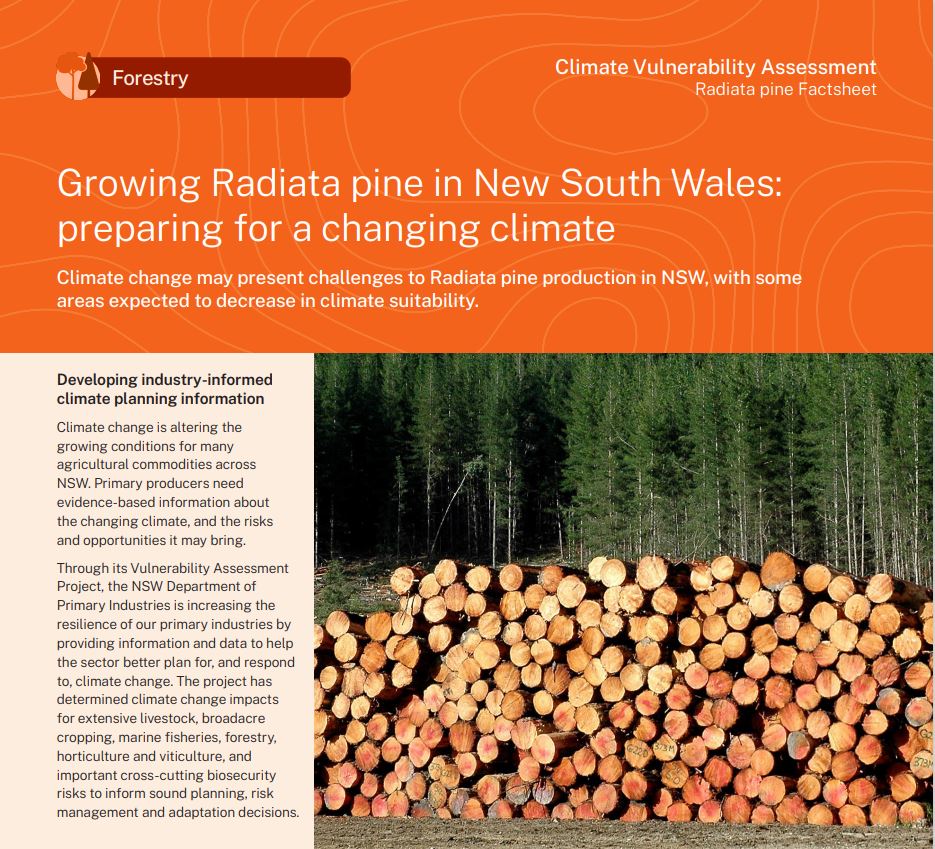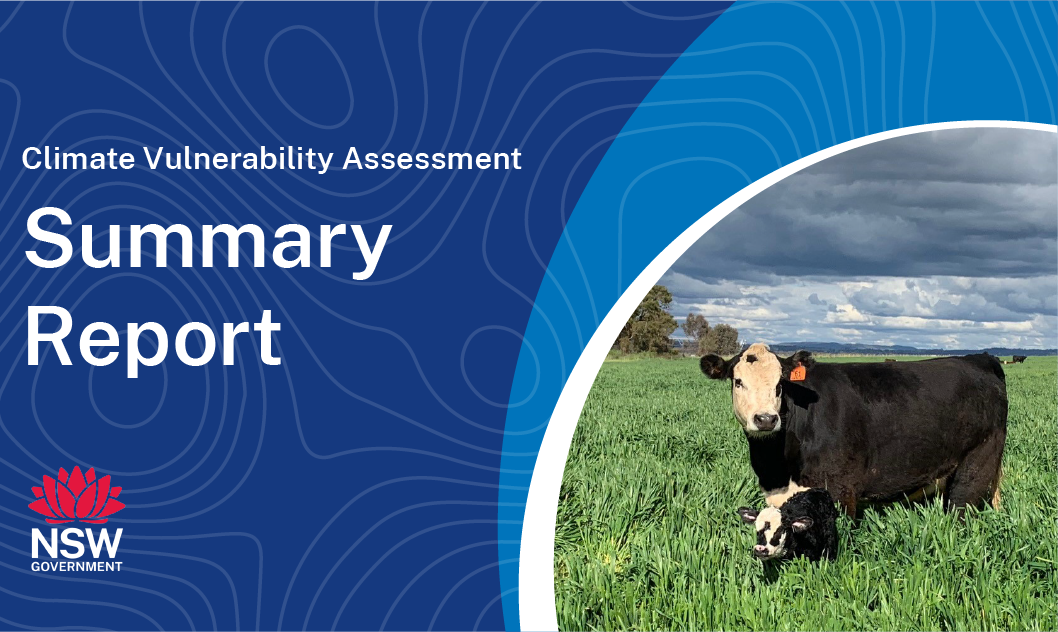What is the NSW DPIRD Climate Vulnerability Assessment? ⏷
Climate change is altering the growing conditions for many commodities across NSW. Primary producers need evidence-based information about the changing climate, and the risks and opportunities it may bring.
The NSW DPIRD Climate Vulnerability Assessments are enhancing the resilience of our primary industries by providing information and data to help the sector better plan for, and respond to, climate change. They have assessed climate change impacts for extensive livestock, broadacre and irrigated cropping, marine fisheries, forestry, horticulture and viticulture, and important biosecurity risks associated with these industries to inform sound planning, risk management and adaptation decisions.
How we assessed climate suitability ⏷
Climate projections were sourced from Climate Change in Australia’s ‘Application Ready Data’. This dataset is comprised of projections from an ensemble of 8 global climate models, each presenting a plausible future climate. The models differ in their projections, giving rise to uncertainty which is reflected in the confidence statements given in brackets. Care should be taken when interpreting these results.
The Climate Vulnerability Assessment is intended to highlight potential industry- or regional-level changes. Intermediate and high emissions scenarios were used in the assessments (RCP4.5 and RCP8.5), but these are not the only future scenarios possible. The inclusion of climate variables important to the commodities production was based on published research, expert knowledge and data quality and availability.
Learn more in the Climate Vulnerability Assessment Project Framework.
Climate impacts: what to expect
Existing pine-growing regions in NSW are expected to continue to have moderate to very high climate suitability for growing pine in 2050 under both emissions scenarios.
Radiata pine vulnerabilities
- An increased prevalence of hot days, as well as the combination of generally hot and dry conditions in summer (and to a lesser extent, autumn and spring), is likely to negatively impact climate suitability in the western reaches of the Walcha, Bathurst, and Green Hills growing regions (high confidence). Expansion into areas west of the current growing regions is also likely to be hampered by these changes (high confidence).
Radiata pine opportunities
- Reduced prevalence of very cold temperatures during winter under future climates will reduce the probability of frost induced seedling mortality (high confidence). In the future, forest managers could consider expanding plantations to areas which were previously considered too cold.
Adapting to the changing climate
Adapting to hotter, drier conditions
- Forest managers could investigate strategies such as ripping and/or mounding to increase soil water availability, spacing of seedlings at planting to increase the volume of soil available for soil water extraction, and timing of thinning to reduce intra-stand competition.
- In the medium term, the development of a genetics program could help to maintain NSW’s Radiata pine production. Such a program could aim to produce trees that can better tolerate expected hotter and drier conditions while optimising production (growth) and consider other tree species.
Where can I find the climate suitability maps?
Maps of historical and future climate suitability for commodities were produced to demonstrate where in the state a commodity is likely to thrive or else be limited by future climatic conditions. The maps are not provided on these webpages but can be found in the Climate Vulnerability Assessment Summary Report (PDF, 41425.92 KB).
Radiata pine Factsheet
(PDF, 429.85 KB)

Summary Report
(PDF, 41425.92 KB)

 Radiata pine in NSW
Radiata pine in NSW